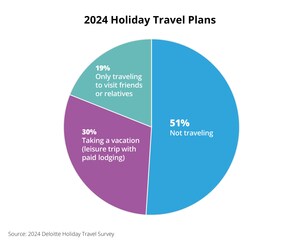NEW YORK, April 19, 2021 /PRNewswire/ --
Key takeaways
- Eighty-two percent of U.S. consumers subscribe to at least one paid streaming video service; the average subscriber has four paid video streaming services.
- Fifty-five percent of respondents now watch a free ad-supported video service.
- Streaming music subscribers pay for an average of two paid music services, and those who subscribe to gaming services pay for an average of three.
- Subscribers cite an increase in price as the biggest reason they would cancel a paid video, music, or gaming service.
- For Generation Z, playing video games is their No. 1 favorite entertainment activity (26%), followed by listening to music (14%), browsing the internet (12%), and engaging on social platforms (11%). Only 10% of Generation Z say that watching TV or movies at home is their favorite form of entertainment (which is No. 1 for all other generations).
- While more people go to social media for news, 67% don't trust the news they see on these services.
Why this matters
Deloitte's annual "Digital Media Trends" survey, 15th edition, found a world reshaped by pandemic-driven trends; and one where streaming video and subscription services have revolutionized the traditional U.S. media and entertainment industry. The online survey of 2,009 U.S. consumers, conducted in February 2021, also revealed there is growing competition for audiences among a crowded field of streaming video providers, but also with other forms of entertainment, including music, video gaming and social media services. In this world of limitless choice, consumers can easily jump to competitors or other forms of entertainment as they weigh cost, content and ad-tolerance, making it challenging for media companies to earn consumer loyalty and cultivate enduring customer relationships.
Consumers love video, but it's not the only show in town
U.S. consumers have access to multiple free and paid entertainment options that are all competing for their attention and loyalty. However, all these different options are dividing and fragmenting the market and challenging providers to understand the nuances among segments, generations, and differing kinds of media.
- Eighty-two percent of U.S. consumers subscribe to at least one paid streaming video service; the average subscriber has four paid video streaming services.
- Streaming music subscribers have an average of two paid music services; and gaming subscribers have an average of three paid gaming services.
- Watching TV and movies at home continues to be the overall favorite entertainment option, with 57% ranking it in their top three (out of 16 entertainment activities). However, only 10% of Generation Z say that watching TV or movies at home is their No. 1 favorite form of entertainment.
- Playing video games is Generation Z's favorite entertainment choice (26%), followed by listening to music (14%). Watching TV and movies was their fifth choice for entertainment.
- When asked what factors caused people to cancel a paid video, music or gaming service, an increase in price was the biggest reason.
Courting the consumer with cost and content
Consumers find it frustrating to manage and pay for a plethora of streaming video services that are now available. As they chase niche content and trending entertainment, consumers are also showing strong interest in ad-supported options that subsidize or remove subscription costs. However, from October 2020 to February 2021, Deloitte found that the churn rate for streaming video services is still hovering around 37%.
- Content (35%) and cost (46%) are the most important factors in deciding to subscribe to a brand new paid streaming video service.
- Fifty-two percent find it difficult to access content across so many services, and 49% are frustrated when a service doesn't make good recommendations for them.
- Fifty-three percent of those surveyed are frustrated by needing multiple service subscriptions to access the content they want.
- Sixty-six percent get frustrated when content they want to watch is removed from a service.
Key quote
"Not only are American consumers more reliant than ever on digital media and entertainment, information gathering and social connection, there is also more competition for audiences among a crowded field of entertainment options. This requires consumers to 'dance' between services introducing frustrations as they try to manage multiple subscriptions and keep track of their favorite content. Media and entertainment companies with a deeper understanding of customer concerns about content, cost and ad-tolerance across all entertainment options and generations, can cultivate long-term relationships and reduce churn."
- Kevin Westcott, vice chairman, Deloitte LLP and U.S. technology, media and telecom leader
Generation Z prefers gaming and music
Generation Z has strikingly different entertainment preferences, often seeking video games and music over watching TV and movies — unlike older consumers who are "video first." As early adopters, Generation Z may actually influence the behaviors of Millennials and Generation X — and possibly younger generations that follow them.
- Eighty-seven percent of Generation Z are playing video games daily or weekly on devices such as smartphones, gaming consoles and computers.
- A strong majority of Generation Z, Millennials and Generation X agree that during the pandemic video games have helped them stay connected to other people and get through difficult times.
- Close to half (46%) say that video games have taken away from other entertainment time.
- For all generations, listening to music is a top-three favorite entertainment activity. Around 60% of respondents have a paid streaming music service, and the same amount have used a free, ad-supported music service.
- For those who pay, the library of music was the primary reason, followed by an ad-free and reasonably priced experience. For those using a free, ad-supported music service, zero cost was the primary reason, followed by ease of access and a broad range of content.
Social media is a gateway to entertainment and information, but trust is a concern
Beyond connection and sharing, social media services have become a gateway for consuming music, video, games and news. However, there is tension between the value that consumers get from social media and the challenges of establishing trust, responsibility for content and the role of regulation. Consumers value social media, but they want more control over their data, and information that is more trustworthy.
- Half of Generation Z rank social media as the No. 1 way they prefer to get news, whereas only 12% prefer to get news from network or cable TV. Conversely, 58% of Boomers say they prefer news on network or cable TV, and only 8% look to social media first for news stories.
- While more people, across generations, go to social media for news, 67% don't trust the news they see on these services.
- For Generation Z, the top two activities on social media are listening to music, followed by playing video games.
- Consumers are divided around the 2020 U.S. Presidential Election; 43% of respondents felt that social media companies did a good job managing misinformation, while conversely 44% of respondents felt that they could have done more.
- Seventy-seven percent of respondents believe that the government must do more to regulate data collection and use.
- Forty-five percent said they are willing to pay for social media if it didn't collect their data.
Key quote
"It's clear that consumers like the convenience of social media as a delivery platform for everything from entertainment to news, however they also want to trust that social media companies are committed to distributing truthful, reliable information while protecting their own personal data. By building trusted and equitable relationships with consumers that address the need for more transparency, agency, privacy and security, social media services can continue to build on their success as dependence on their platforms continues to grow."
- Jana Arbanas, vice chairman, Deloitte LLP and U.S. telecom, media and entertainment sector leader
Advertising: Building block for some, barrier for others
As more consumers use advertising supported digital entertainment services, ad-related preferences and expectations around personalization and privacy vary across consumer segments and media. Some people welcome ads as a way to get more content while managing costs, building their own set of go-to services; others will do whatever they can to avoid advertising.
- Forty percent of U.S. consumers note that they would prefer to pay $12 a month for a streaming video service with no ads, versus 60% of consumers who would accept some ads for a reduction in monthly subscription costs.
- Forty-five percent of consumers agreed they would rather pay than have ads on their music streaming service. For Millennials, 67% say they would rather pay.
- For those that subscribe to a gaming service, adding or increasing the amount of advertising are the top reasons they would most likely cancel or stop using a paid service.
- Younger generations say that social media influencers and ads on social media are the two most persuasive channels influencing their buying decisions (55% of Generation Z and 66% of Millennials say that ads on social media are influential versus 49% of Generation X and 13% of Boomers).
- Sixty-two percent of Generation Z and 72% of Millennials would rather see ads personalized to their likes and activity than generic ones. However, only 40% of consumers overall said they would be willing to provide more personal information to receive advertising targeted to their interests.
- Forty-three percent of consumers (39% of Generation Z and 54% of Millennials) say they would associate content that included hate speech with ads that are displayed nearby.
For additional details on the findings, visit here. Connect with us on: @DeloitteTMT, @kwestcott911, or on LinkedIn: @KevinWestcott, @JanaArbanas, @Jeff_Loucks; #digitalmedia; #tmttrends.
About Deloitte
Deloitte provides industry-leading audit, consulting, tax and advisory services to many of the world's most admired brands, including nearly 90% of the Fortune 500® and more than 7,000 private companies. Our people come together for the greater good and work across the industry sectors that drive and shape today's marketplace — delivering measurable and lasting results that help reinforce public trust in our capital markets, inspire clients to see challenges as opportunities to transform and thrive, and help lead the way toward a stronger economy and a healthier society. Deloitte is proud to be part of the largest global professional services network serving our clients in the markets that are most important to them. Building on more than 175 years of service, our network of member firms spans more than 150 countries and territories. Learn how Deloitte's more than 330,000 people worldwide connect for impact at www.deloitte.com.
Deloitte refers to one or more of Deloitte Touche Tohmatsu Limited, a UK private company limited by guarantee ("DTTL"), its network of member firms, and their related entities. DTTL and each of its member firms are legally separate and independent entities. DTTL (also referred to as "Deloitte Global") does not provide services to clients. In the United States, Deloitte refers to one or more of the US member firms of DTTL, their related entities that operate using the "Deloitte" name in the United States and their respective affiliates. Certain services may not be available to attest clients under the rules and regulations of public accounting. Please see www.deloitte.com/about to learn more about our global network of member firms.
SOURCE Deloitte

Related Links
WANT YOUR COMPANY'S NEWS FEATURED ON PRNEWSWIRE.COM?
Newsrooms &
Influencers
Digital Media
Outlets
Journalists
Opted In






Share this article